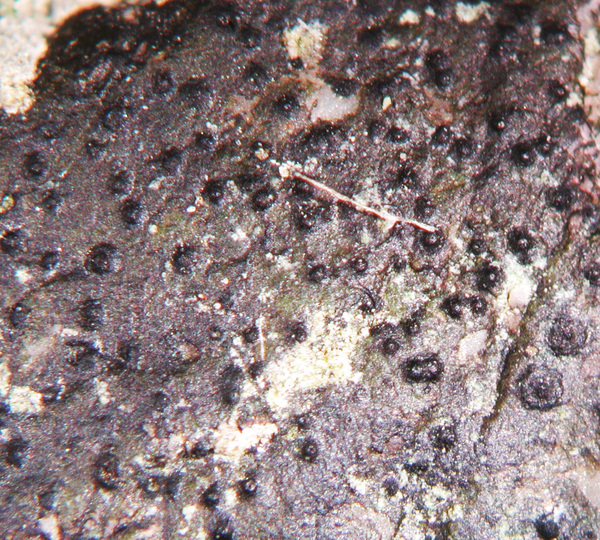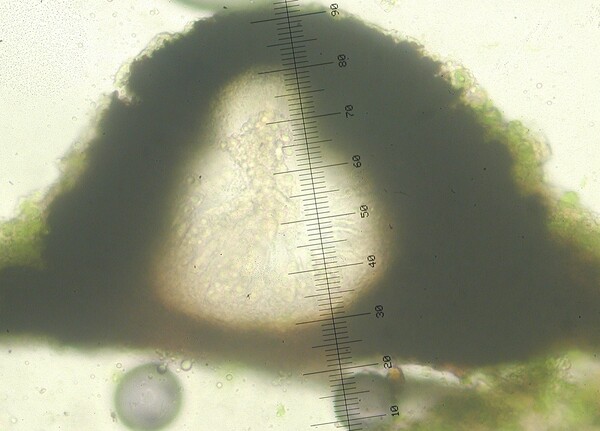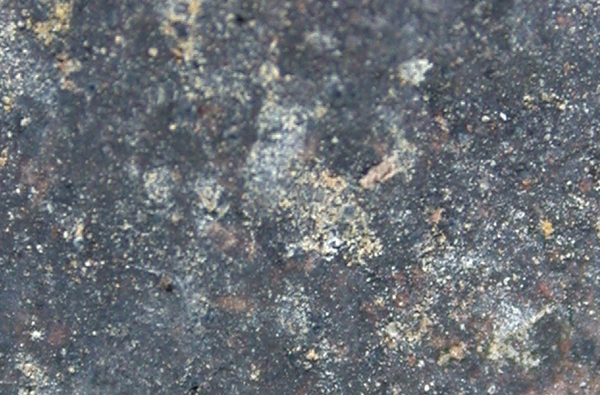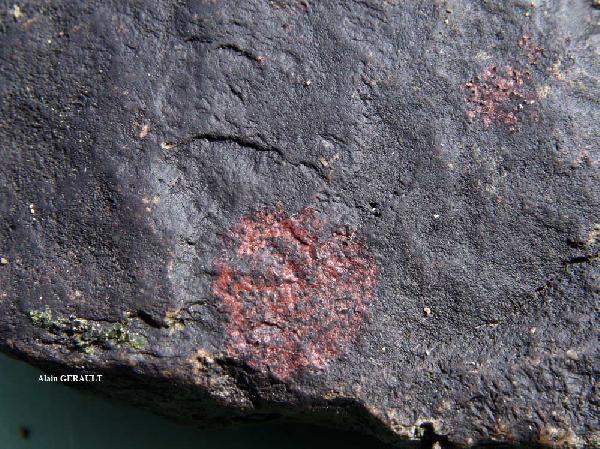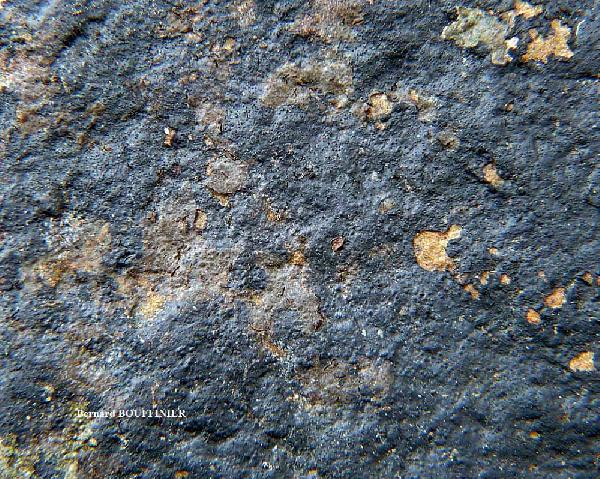Verrucaria aquatilis Mudd
Man. Brit. Lich.: 285, 1861.
Synonyms: Bachmannia maurula (Müll. Arg.) Zschacke; Verrucaria aquatilis var. aerimontana Servít; Verrucaria maurula Müll. Arg.; Verrucaria retecta Zschacke; Verrucaria vitricola Nyl.?
Distribution: N - Ven (Nascimbene & Nimis 2007, Thor & Nascimbene 2007, Nascimbene 2008, Nascimbene & al. 2008b, 2009), TAA (Nascimbene & al. 2007b). C - Sar (Nascimbene & al. 2023). S - Cal (Puntillo 1996).
Description: Thallus crustose, episubstratic, 10-55 μm thick, black, blackish-green or brown-black when dry, black to green when wet, continuous or indistinctly and irregularly rimose, subgelatinous when wet, without a clear prothallus. Cortex with a greenish brown to dull brown pigment; medulla white or patchily pigmented, without a black basal layer. Perithecia (0.1-)0.2-0.3 mm across, forming low conical-hemispherical projections, covered at least when young by a thalline layer, the ostiole inconspicuous. Involucrellum conical, 140-430 μm in diam., extending laterally within the thallus, often reaching to base-level, the pigment red-brown, K+ grey; exciple 80-130 x 80-150 μm, the wall colourless or very pale brown, except the part around the ostiole which is often dull blue-grey or blue-green; hamathecium of periphyses and periphysoids, interascal filaments absent; hymenial gel hemiamyloid, I+ red (I+ blue at very low concentrations of I), K/I+ blue. Asci 8-spored, clavate, I-, fissitunicate, the wall thickened above, with an ocular chamber, dehiscent by extrusion of an endotunica to form a delicate rostrum, Verrucaria-type. Ascospores 1-celled, hyaline, broadly ellipsoid, (3.9-)6-9(-11) x (4-)5-7(-9.3) μm. Photobiont chlorococcoid, the cells irregularly dispersed or rarely arranged in vertical columns. Spot tests: K-, C-, KC-, P-, UV-. Chemistry: without lichen substances.
Note: distinguished from other freshwater species by the thin blackish thallus and the very small, broadly ellipsoid ascospores (see Orange 2013), this species grows on siliceous or calcareous rocks submerged in cold creeks; probably overlooked, like many amphibious lichens in Italy.
Growth form: Crustose
Substrata: rocks
Photobiont: green algae other than Trentepohlia
Reproductive strategy: mainly sexual
Periodically submerged (e.g. in creeks)
Commonnes-rarity: (info)
Alpine belt: absent
Subalpine belt: very rare
Oromediterranean belt: very rare
Montane belt: rare
Submediterranean belt: extremely rare
Padanian area: absent
Humid submediterranean belt: absent
Humid mediterranean belt: absent
Dry mediterranean belt: absent
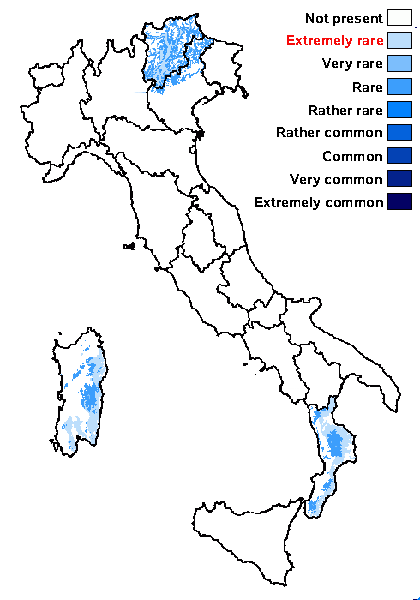
Predictive model
Herbarium samples
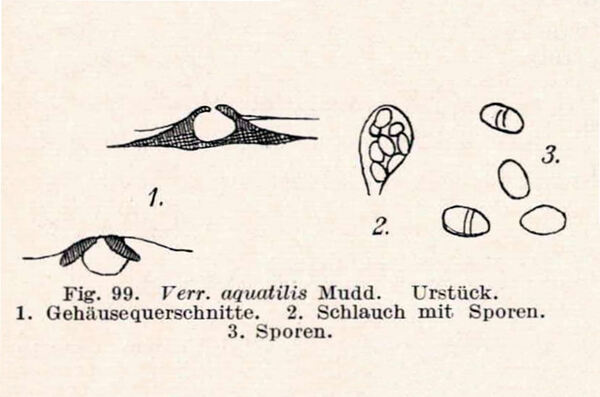
Zschacke, H. (1934) Epigloeaceae, Verrucariaceae und Dermatocarpaceae. In: Dr. L. Rabenhorst‘s Kryptogamen-Flora, Band 9, Abt. 1, Teil 1. Akademische Verlagsgesellschaft, Leipzig, 695 pp. - Public Domain
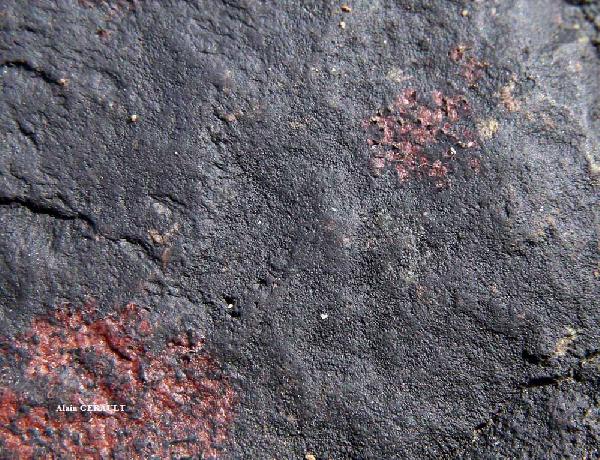
Alain Gerault - Source: http://www.lichensmaritimes.org/index.php?task=fiche&lichen=526&lang=en
France, Landevennec
Growth form: Crustose
Substrata: rocks
Photobiont: green algae other than Trentepohlia
Reproductive strategy: mainly sexual
Periodically submerged (e.g. in creeks)
Commonnes-rarity: (info)
Alpine belt: absent
Subalpine belt: very rare
Oromediterranean belt: very rare
Montane belt: rare
Submediterranean belt: extremely rare
Padanian area: absent
Humid submediterranean belt: absent
Humid mediterranean belt: absent
Dry mediterranean belt: absent

Predictive model
| Herbarium samples |

Zschacke, H. (1934) Epigloeaceae, Verrucariaceae und Dermatocarpaceae. In: Dr. L. Rabenhorst‘s Kryptogamen-Flora, Band 9, Abt. 1, Teil 1. Akademische Verlagsgesellschaft, Leipzig, 695 pp. - Public Domain

 INDEX FUNGORUM
INDEX FUNGORUM
 GBIF
GBIF
 DOLICHENS
DOLICHENS
